Gallery Network
7 Questions for Italian Architect Andrea Branzi on His Inventive Approach to Furniture Design
The seminal architect and designer expands on his explorations of the natural and the industrial in solo show at Friedman Benda, New York.
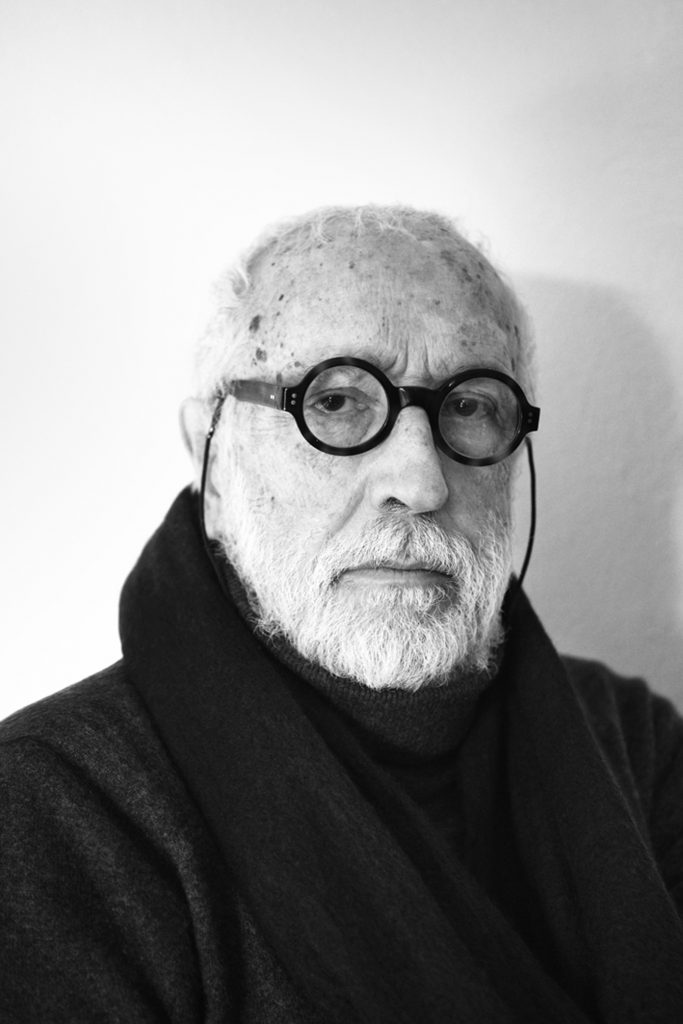
The seminal architect and designer expands on his explorations of the natural and the industrial in solo show at Friedman Benda, New York.

Artnet Gallery Network

Influential Italian architect and designer Andrea Branzi (b. 1938) has garnered a cult following for his nature-informed furniture design and sculpture that balance conceptualism with materiality. Between 1964 and 1974, Branzi was a founding member of the design studio Archizoom Associati, and later became a member of Studio Alchimia, before associating with the Memphis Group beginning in the early 1980s. A prominent figure within contemporary design, Branzi has won several Compasso d’Oro awards (individual and group) and was named an Honorary Royal Designer by the United Kingdom (2008).
Earlier this month, Branzi’s third solo show, “Contemporary DNA,” opened at Friedman Benda, New York, showcasing three new series, “Roots,” “Germinal Seats,” and “Buildings,” with each body of work exemplifying the modes and manners Branzi has cultivated over the course of his career. Both “Roots” and “Germinal Seats” engage with thematic dichotomies, contrasting natural with industrial, organic landscape with architectural design. In “Buildings,” form and function synthesize, with each vessel offering vignettes in which personal items can be presented. The show also features a new collection of Branzi’s signature paper “Lamps,” with iterations including bamboo and maple leaf details.
We recently spoke with Branzi to learn more about his process and where he finds inspiration.
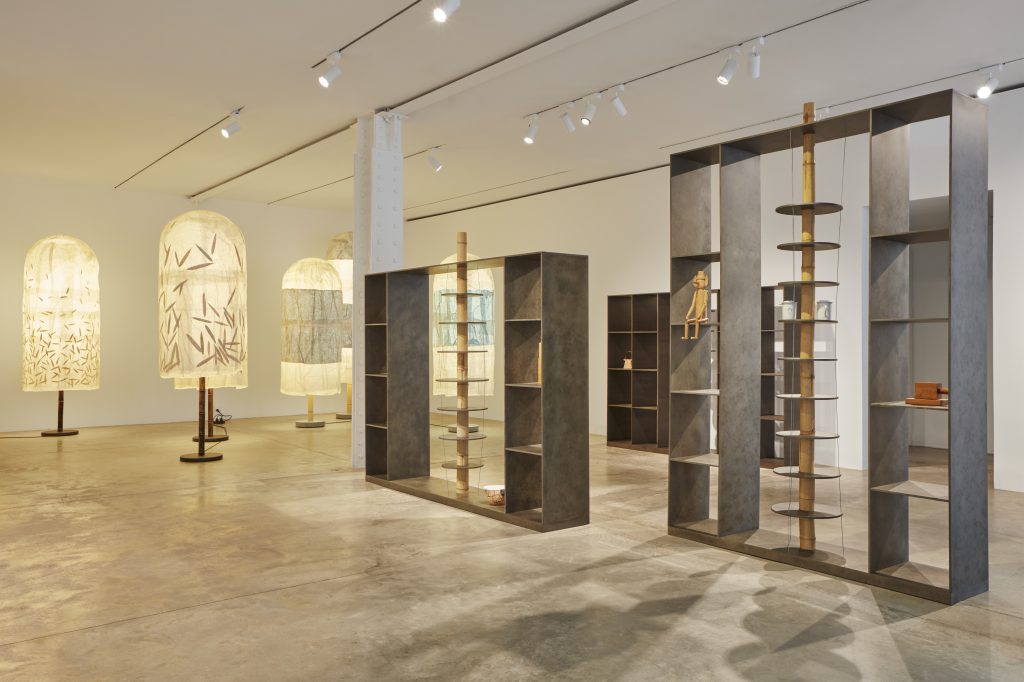
Installation view of “Andrea Branzi: Contemporary DNA” (2023). Photo: Timothy Doyon. Courtesy of Friedman Benda and Andrea Branzi.
Your solo exhibition at Friedman Benda presents three new bodies of work. Can you tell us about any overarching ideas or inspirations behind the show? Do you see these series as distinct from one another, or do they explore a common theme?
When I design, I don’t question myself about the exhibition or the overall meaning of the works. I’m interested in separate experiences that find an overall connection in the end.
What do you want the viewing experience of the exhibition to inspire or impart? What do you hope viewers take away with them?
Generally, I work in different languages and am often surprised by the outcome. I hope the viewers can feel surprised in turn, even if for different reasons than mine. The meaning doesn’t pass through words, but personal feelings and impressions.
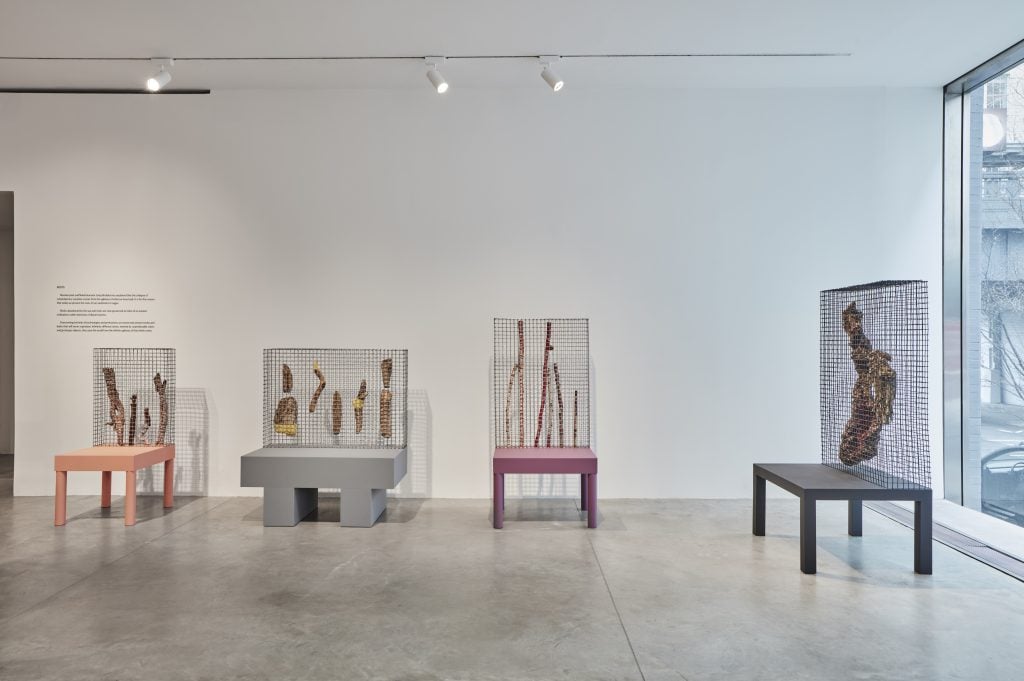
Installation view of “Andrea Branzi: Contemporary DNA” (2023). Photo: Timothy Doyon. Courtesy of Friedman Benda and Andrea Branzi.
What does your creative process look like, where do you start? Do you work towards a clear idea, or is it more intuitive?
My work has always had an unforeseen origin; it’s not always clear to me the meaning of my works at the beginning of the design process.
The materials used across each series are incredibly diverse, what role does materiality play in your work? How do you choose?
I like using different materials, without following any functional logic. Actually, I think that the contemporary world doesn’t follow a unique logic, but rather many that are contrasted at the same time.
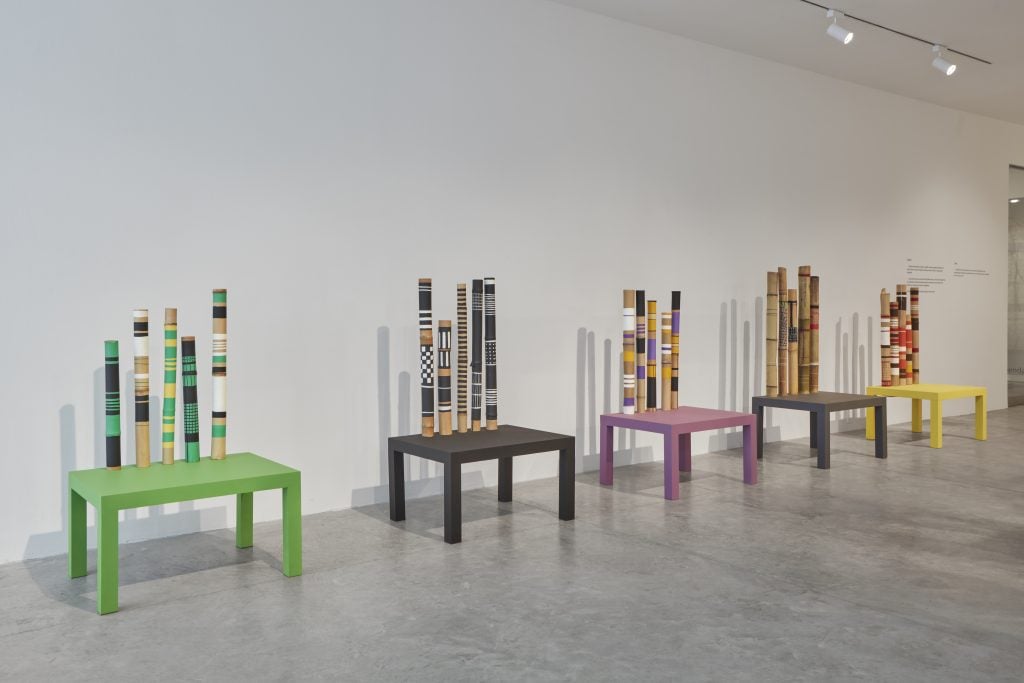
Installation view of “Andrea Branzi: Contemporary DNA” (2023). Photo: Timothy Doyon. Courtesy of Friedman Benda and Andrea Branzi.
Where do you most often look for or find inspiration? Are there any designers or artists who have significantly influenced your work?
I have always followed ideas (and thinkers) mainly working in other fields than architecture and design—such as art, music, philosophy, poetry. The influences mix in my mental elaboration.
You’ve had a long and storied career. Do you have any advice for architects or designers just starting out?
I think they should not consider belonging to a specific professional field, but to always consider the culture and society around them.
Can you tell us what you are working on now, or what you are hoping to work on next?
I am working on many different paths. Books, exhibitions, drawings, objects.
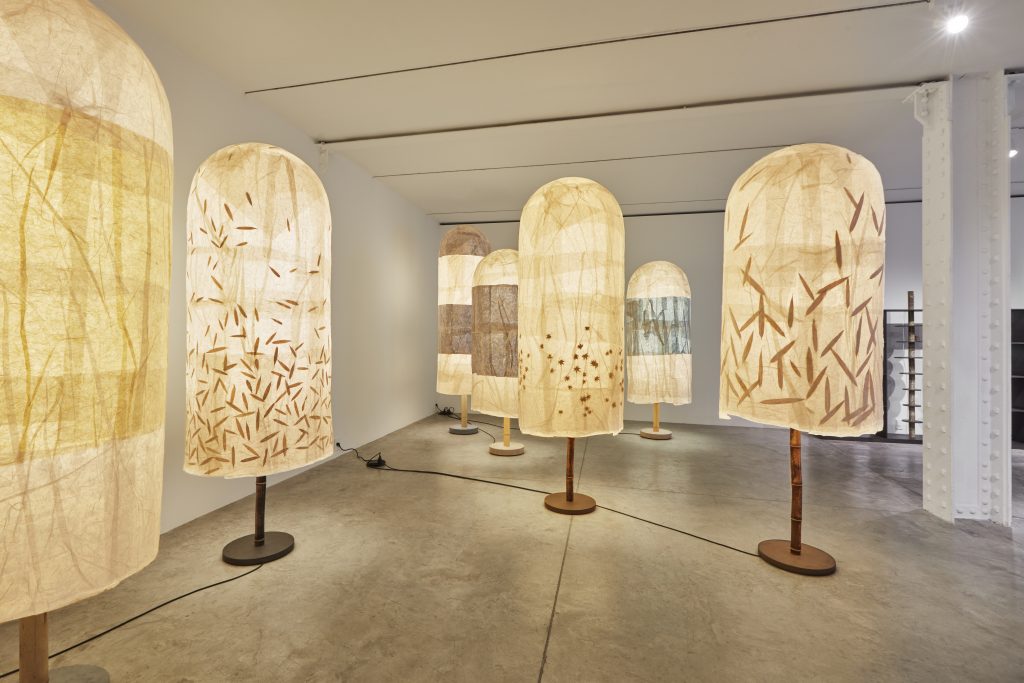
Installation view of “Andrea Branzi: Contemporary DNA” (2023). Photo: Timothy Doyon. Courtesy of Friedman Benda and Andrea Branzi.
“Andrea Branzi: Contemporary DNA” is on view at Friedman Benda, New York, through April 22, 2023.